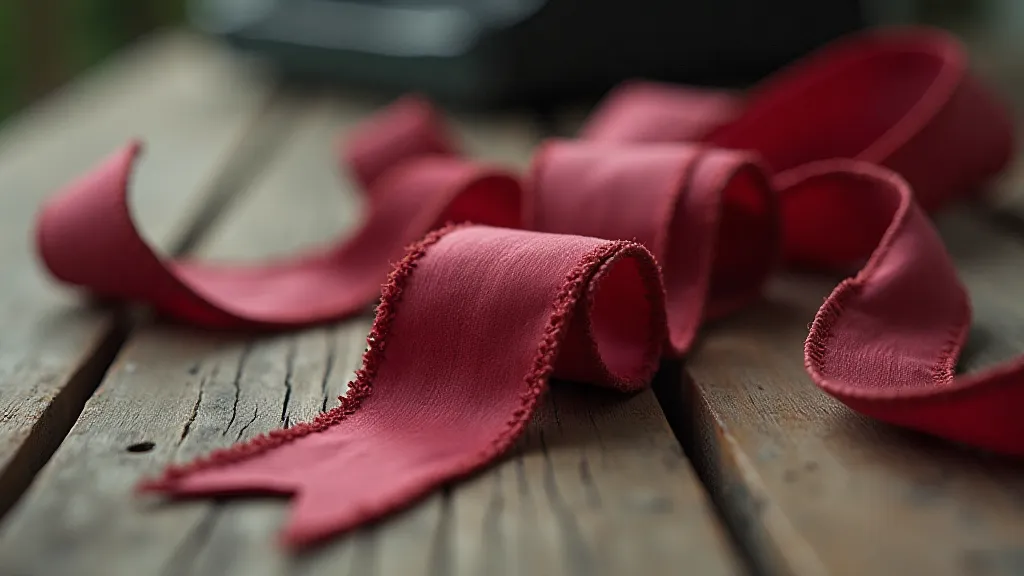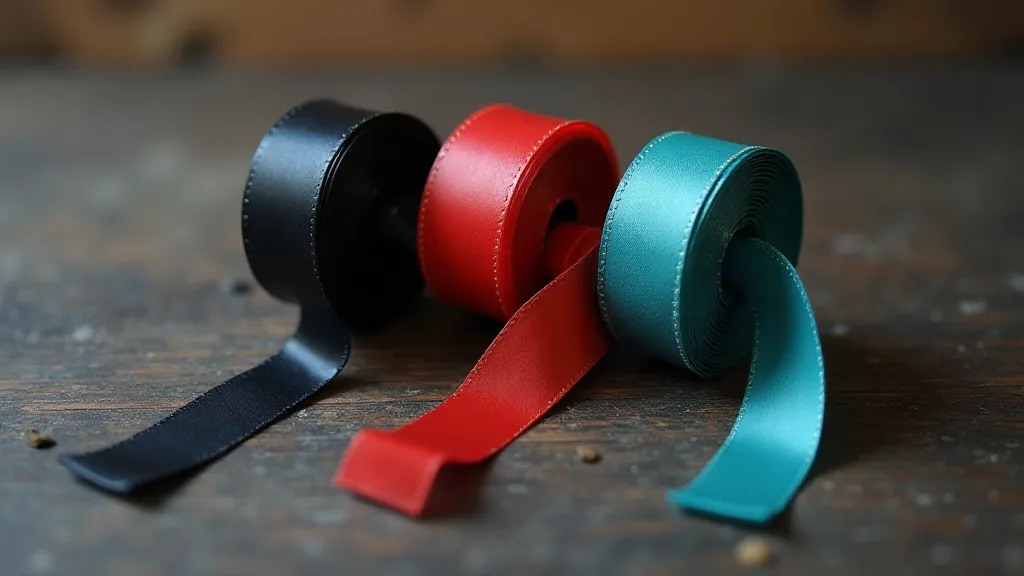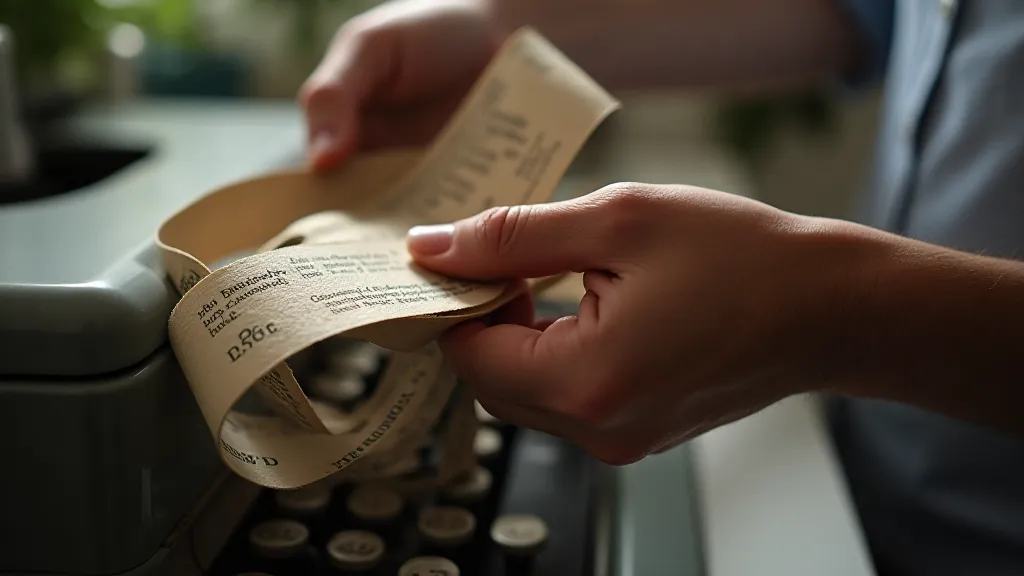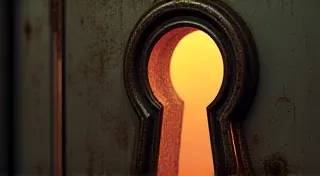Imprints of the Soul: Understanding the Stories Held Within Ribbons
There's a quiet magic held within a vintage typewriter ribbon. It’s more than just a strip of inked nylon or silk; it's a palimpsest of memories, a silent witness to countless stories, and a tangible link to the hands that guided the keys. We, as restorers and collectors, often focus on the mechanics, the gears, the levers—the tangible machinery of these beloved tools. But it's in the ribbon, in the faint ghost of the words it once rendered, that the true soul of a typewriter resides.
I remember the first ribbon that truly moved me. It was a deep crimson, almost burgundy, clinging to a Smith Corona Silent, rescued from a dusty antique shop. The shopkeeper shrugged when I asked about it; "Just part of the machine," he said, dismissing it with a wave. But as I carefully unfurled it, I noticed something extraordinary: a faint impression of poetry, almost ethereal in its fading quality. It wasn’s legible, not really, but I felt a resonance, a sense of longing and creativity that seeped into my own spirit.
These ribbons, particularly the older ones, weren’t manufactured with the same cold efficiency as today’s office supplies. They were crafted. The materials—the fabric itself, the quality of the ink—were selected with care. Early ribbons were often made from silk, resulting in an unparalleled smoothness and richness of color. Later, nylon became the standard, offering durability and a wider range of hues. Each fabric imparted a unique character to the printed words, a subtle nuance lost on modern inkjet printers and laser jets.

The Echoes of the Past: Who Wrote These Words?
Imagine the lives interwoven with these ribbons. Perhaps it recorded a love letter penned on a rainy afternoon, a journalist hammering out a breaking news story, a student struggling with a final exam essay, or a playwright wrestling with a challenging scene. These ribbons, unlike a digital file, carried an almost palpable weight of human effort, of dreams and anxieties rendered in black and white (or red, or blue, or green). The lingering impression of such moments begs the question: who were the "ghost writers" who imprinted these memories onto these fragile strips?
It's tempting to romanticize the past, of course. But the reality was often complex. The same ribbon might have recorded both triumphs and failures, declarations of love and bitter arguments. Yet, even in those moments of hardship, the act of writing itself offered a form of solace, a way to process emotions and make sense of the world. And the ribbon, the silent participant, absorbed those emotions, preserving them in a unique and enduring way. The fragile nature of these remnants prompts reflection on the broader theme of ephemeral echoes, and the fleeting nature of memory itself.
The degradation of a ribbon isn's simply a matter of material decay; it's a fading of those stories, a gradual silencing of voices. The ink bleeds, the fabric crumbles, and the words vanish, leaving behind only a ghost of what once was. This is why restoration is so vital—it’s not just about preserving a piece of equipment; it's about safeguarding a fragment of history, ensuring that those voices aren't entirely lost.
Understanding the Craft: From Silk to Nylon
The process of creating typewriter ribbons was a skilled craft. Early silk ribbons were incredibly delicate, requiring meticulous handling at every stage. The silk had to be evenly coated with ink, often using specialized machinery that ensured consistent color and clarity. Nylon ribbons, while more robust, still demanded precision in manufacturing. The pigments used in the inks were also critical; early inks often contained dyes that were prone to fading and bleeding, contributing to the unique challenges of ribbon restoration.
The colors themselves were a fascinating study in evolving tastes and technological advancements. Early ribbons tended to be limited to a few basic colors—black, red, and occasionally blue. As dye technology improved, a wider range of hues became available, reflecting the changing aesthetics of the time. Some rare colors, like chartreuse or lavender, are highly sought after by collectors, not just for their beauty but also for the clues they offer about the ribbon’s age and origin. These pieces offer a glimpse into the emotional resonance of antique equipment and the profound connection we forge with objects imbued with history.

The Art of Restoration: More Than Just Cleaning
Restoring a vintage typewriter ribbon is a delicate process. It’s not simply about cleaning it or removing dust; it's about understanding its construction, its fragility, and its story. Often, the best approach is to do as little as possible, preserving the ribbon in its original condition while stabilizing any damage. Replacing the ink, while tempting, is usually discouraged, as it destroys the ribbon’s historical integrity.
The challenges are numerous. Silk ribbons are particularly vulnerable to damage, as they are easily frayed and broken. Nylon ribbons can become brittle with age, making them prone to cracking and peeling. The ink can bleed or fade, making the words illegible. And of course, there's the constant risk of further damage if the restoration is not carried out with the utmost care. The feeling is akin to handling a whisper of a memory—a moment captured and then slowly dissolving back into the ether. This process brings to mind the sense of lost voices held within these fragile remnants, leaving us to ponder the stories they might reveal.
Collecting and Connection: A Legacy of Words
For some, collecting vintage typewriter ribbons is a hobby, a way to preserve a piece of history. For others, it’s a deeper connection to the past, a way to imagine the lives of those who wrote with these machines. And for all of us, whether we are restorers, collectors, or simply admirers, these ribbons offer a powerful reminder of the enduring power of words.
Holding a vintage ribbon in your hand is like holding a piece of someone’s soul. It's a tangible link to a time when writing was a more deliberate act, a more personal expression. And in a world increasingly dominated by digital technology, these ribbons offer a welcome respite, a chance to reconnect with the simple beauty of the written word. These relics serve as more than just objects; they are vessels of memory—evidence of the profound mark left by those who came before. We are all part of a chain, and each ribbon is a link, whispering tales of creativity and connection. These silent witnesses to human experience inspire reflection on the ghost writer’s legacy, reminding us of the power of narratives to shape our understanding of the world.

The faint whisper of stories embedded within each ribbon is a reminder that we are all part of a larger narrative, a continuous chain of creativity and expression. And it is our responsibility, as stewards of this legacy, to ensure that those voices continue to be heard, long after the last key has been pressed. The final image remains – a poignant reminder of the fleeting nature of existence and the power of words to transcend time and preserve the essence of humanity. It is a call to cherish the past and to embrace the stories it holds, recognizing that each ribbon represents a paragraph – a moment frozen in history, waiting to be rediscovered and shared with generations to come. Consider the bittersweet beauty of the last paragraph—a silent farewell, a final echo of a story completed.
The fragility of these ribbons underscores the delicate balance between preservation and acceptance. We must acknowledge that some stories will inevitably fade, some voices will be lost, but the act of remembering, of seeking out these fragments of the past, is a testament to the enduring human spirit. It’s an acknowledgement that even in the face of loss, there is beauty, there is connection, and there is a profound sense of purpose in safeguarding the echoes of those who came before us. Let us continue to listen for those whispers, to cherish those fragments, and to honor the legacy of words that bind us together.





